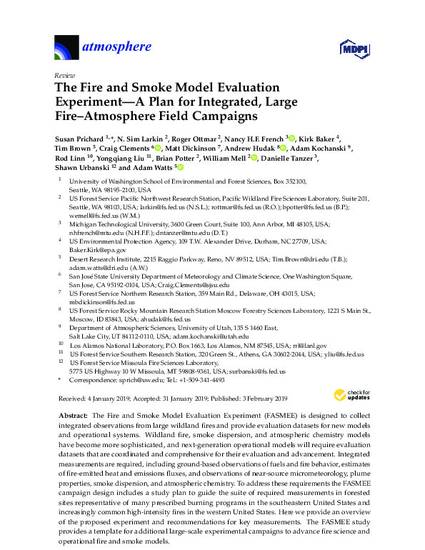
- mixed conifer forest,
- southern pine forest,
- wildland smoke,
- fire behavior,
- plume dynamics,
- dispersion,
- smoke chemistry
The Fire and Smoke Model Evaluation Experiment (FASMEE) is designed to collect integrated observations from large wildland fires and provide evaluation datasets for new models and operational systems. Wildland fire, smoke dispersion, and atmospheric chemistry models have become more sophisticated, and next-generation operational models will require evaluation datasets that are coordinated and comprehensive for their evaluation and advancement. Integrated measurements are required, including ground-based observations of fuels and fire behavior, estimates of fire-emitted heat and emissions fluxes, and observations of near-source micrometeorology, plume properties, smoke dispersion, and atmospheric chemistry. To address these requirements the FASMEE campaign design includes a study plan to guide the suite of required measurements in forested sites representative of many prescribed burning programs in the southeastern United States and increasingly common high-intensity fires in the western United States. Here we provide an overview of the proposed experiment and recommendations for key measurements. The FASMEE study provides a template for additional large-scale experimental campaigns to advance fire science and operational fire and smoke models.
Available at: http://works.bepress.com/craig_clements/47/

This article was published in Atmosphere, volume 10, issue 2, 2019. It is also available on the journal's site at this link.
This is an open access article distributed under the Creative Commons Attribution License which permits unrestricted use, distribution, and reproduction in any medium, provided the original work is properly cited (CC BY 4.0).